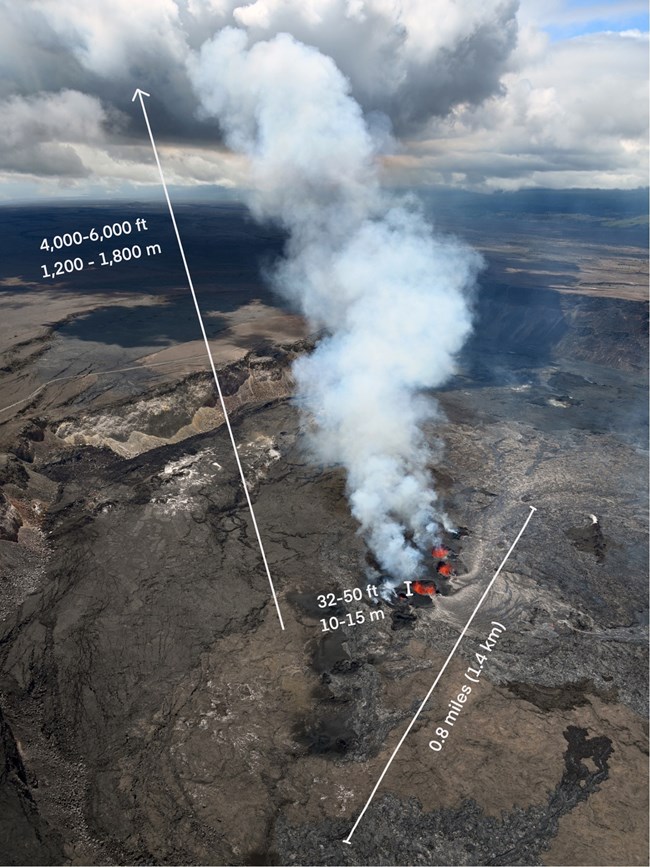|
Visit our keyboard shortcuts docs for details
A chronological account of the geologic events during the September 2023 eruption. 
NPS Photo Since the 2018 summit collapse, Halemaʻumaʻu had gradually filled with lava in the last five eruptions. This most recent eruption concealed the remnants of the 1971 and 1982 Kīlauea eruptions under fresh lava flows. Within Halemaʻumaʻu crater, an area of 496 acres (201 hectares) was transformed by these lava flows, offering visitors breathtaking views. 
NPS Photo/M.Newman While the eruption remained confined within the summit caldera, safety concerns primarily focused on volcanic gas and delicate strands of volcanic glass known as Pele’s hair, which had the potential to be carried downwind and causing serious threats to human health. The USGS and the park advised everyone to minimize their exposure to these volcanic particles. 

Left image
Right image
This eruption marked the first time lava had reached an accessible area of the caldera floor since 2018, allowing geologists to collect molten samples near the erupting vents. These samples were rapidly cooled with water, transported to the University of Hawaiʻi in Hilo, dried in a warm oven for two hours, ground into a uniform powder, and then compressed into pellets under 25 tons of pressure for analysis in an Energy Dispersive X-Ray Fluorescence Spectrometer (EDXRF). After 24 hours of analysis, it was revealed that the temperature and chemistry of the lava from this recent eruption closely resembled that of the past four eruptions. This suggests that even if hotter magma from deeper sources enters the volcano, it undergoes mixing and cooling within a shallower magma body before reaching the surface. 
Photograph courtesy of USGS
This eruption provided a valuable opportunity for scientists to study the eruptive dynamics of Kīlauea, from its onset to the eventual cessation of activity. On September 16, eruptive activity greated decreased and HVO webcams showed little or no fountaining. The area of active lava had retreated further towards the vents, with numerous ooze-outs visible over other parts of Halema‘uma‘u crater floor overnight.
|
Last updated: September 26, 2023
